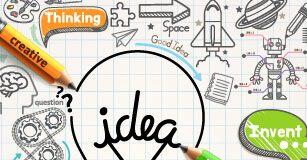How Do You Know and Why is it Important?
The importance of asking good questions to drive engagement and effective learning cannot be understated.

Someone once said the best thing you can do with a question is consider it, polish it, and hand it back. Not answering a child’s questions is extremely difficult. Many teachers feel that refusing to answer a question is inconsistent with what teaching and learning is all about.
Our ultimate goal as teachers is to create curious problem-solvers and critical thinkers. Answering every question sends the message that they cannot do it for themselves and even discourages creative thinking and exploring new directions for solutions.
Effective inquiry skills are essential for success in our rapidly changing world. Helping students figure out how to ask good questions (and be thoughtful in finding their own answers) prepares them for “their future; not for our past,” explains David Thornburg. He suggests changing our focus from a ‘What’ driven curriculum to one driven by processes – the ‘How’ and ‘Why’ questions. When ‘How’ and ‘Why’ drive our classrooms, there is no need to explore content first. The ‘What’ of a subject is explored as we investigate the ‘How’ and ‘Why.’
Dan Rothstein and Luz Santana have developed a Question Formulation Technique (QFT) designed to engage students in divergent thinking, convergent thinking, and metacognition. They suggest teachers approach a subject with a question that is broad enough to invite inquiry, but not too broad to be confusing. Students work together through a process of brainstorming questions, looking at open and closed questions, improving the questions, prioritizing the questions, identifying next steps, and finally reflecting on “what was learned, how it was learned, and what they now know or feel differently about.”
Asking good questions is essential to building student inquiry skills. We have all been steeped in looking for the right answer, and responding to questions with facts, so it’s imperative that we learn to step outside that box and explore different approaches. Peter H. Johnston shares, “It is the perception of uncertainty that enables dialogue... If there is certainty, or only one view, there is nothing to discuss and nothing to learn.”
Johnson offers two questions for us to consider:
- The three main causes for the Civil War were…?
- From the perspective of the white male living in the 20th Century, the main reasons for the Civil War were…? (p. 51)
Which question strikes you as more interesting? Why? You have no doubt noticed that the “The” in the first question indicates there is a single right answer, for which assessment can easily occur.
There are many interesting aspects to the second question. First, the implication that there might be different perspectives is intriguing. Second, it calls attention to the fact that context makes a difference. Such questions promote the important ideas of inquiry and research through uncertainty.
Nancy Lee Cecil supports this view and promotes its use as early as possible, “the sooner children begin to realize that there are many ways of thinking about an issue, the more likely it is that they will grow up with the freedom to look at a the world in a variety of ways.” She continues, “The question is a pivotal - if not the pivotal - component in critical thinking.”
In his book, Lost and Found, Jamie McKenzie promotes “wondering and wandering” and highlights the importance of encouraging students “to wrestle with quandaries, dilemmas, and enigmas, whether it be through novels, history, or scientific anomalies.” He proposes that the importance of mystery as we approach the core curriculum should be the rule rather than the exception.
If you are looking for a fresh approach, project-based learning (PBL) provides a solid method of encouraging inquiry. Starting with a driving question, PBL sets the stage for students to pursue their interests on a challenging curricular topic that encourages exploration, critical thinking, engagement, drawing conclusions based on evidence, making the learning relevant, and deep understanding on a topic. If you are not yet familiar with PBL, explore ideas found in the Project-based Learning section here at Creative Educator, and start with a small project.
Even if you agree with the value of encouraging thoughtful questions, changing instruction will be a challenge. My suggestion is that we explore our own “wonderings and wanderings,” looking at what interests us, and thinking about how we can answer our own questions. Have fun, keep exploring, and enjoy the journey!
Bibilography
Rothstein, D. and Santana, L. (2011) Make Just One Change: Teach Students to Ask Their Own Questions. Harvard Education Press.
Thornburg, D. D. Ph.D. (2010) “Why ‘Why’ is More Important Than ‘What’ in Education.” Thornburg Center for Space Exploration: https://www.tcse-k12.org/pages/whywhy.pdf
Cecil, Nancy Lee. (1995) The Art of Inquiry: Questioning Strategies for K-6 Classrooms. Pegius Publishers.
Johnston, Peter H. (2012) Opening Minds: Using Language to Change Lives. Stenhouse Publishers.
McKenzie, J. (2011) Lost and Found: A Guide to Discovery Learning through Purposeful Wandering, From Now On Press.










